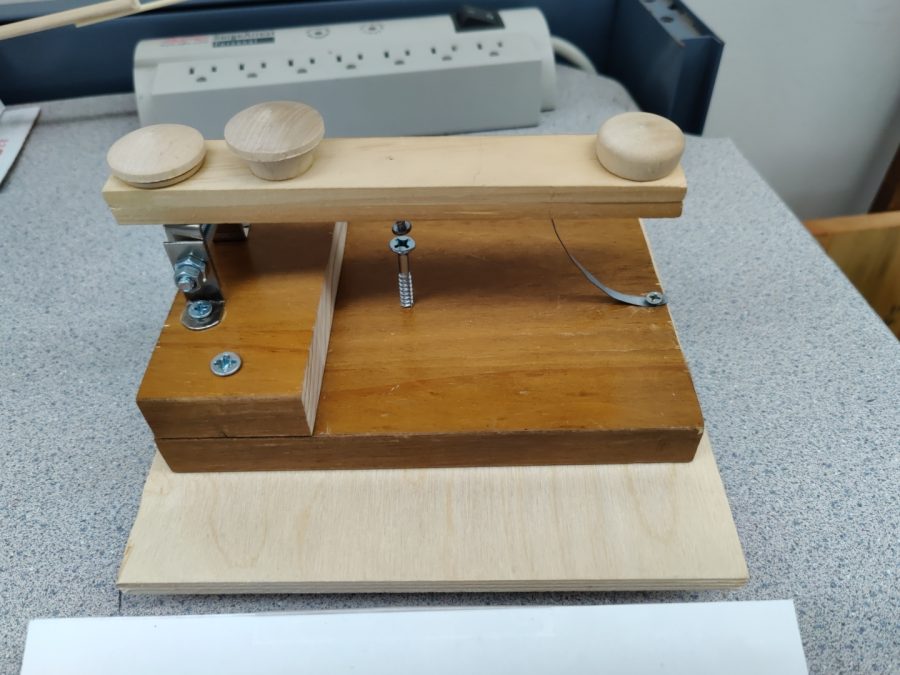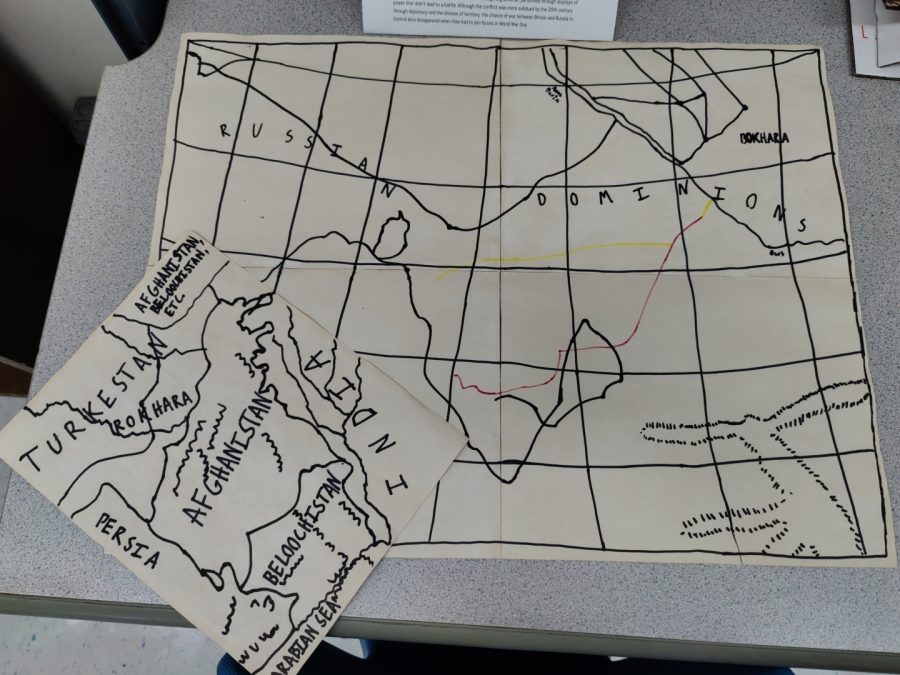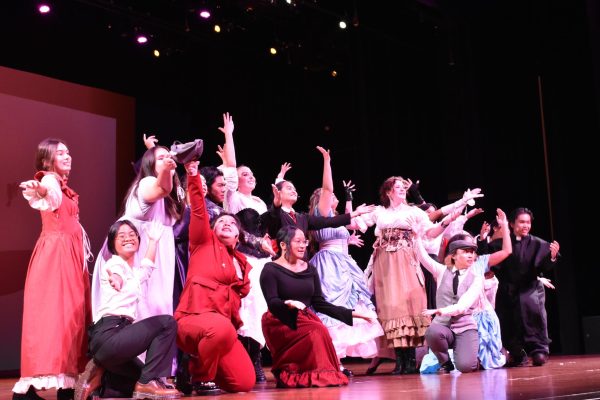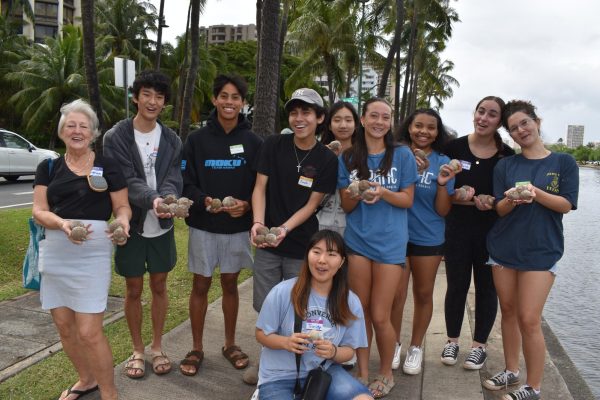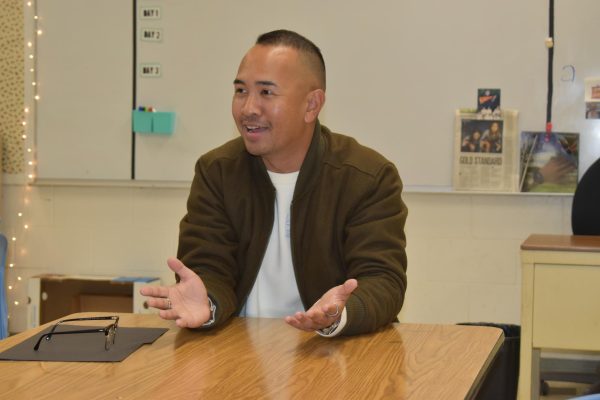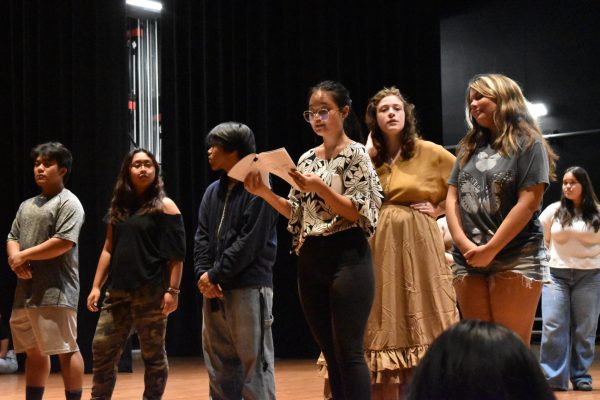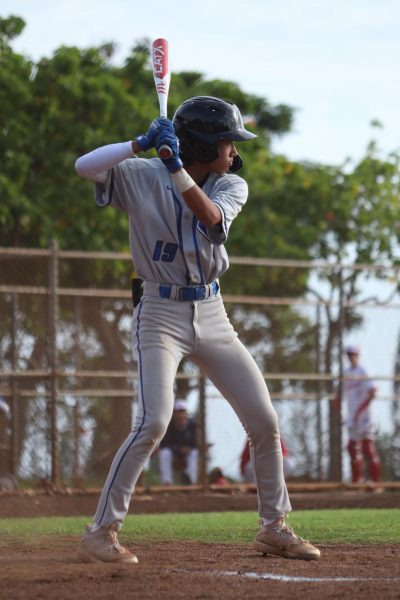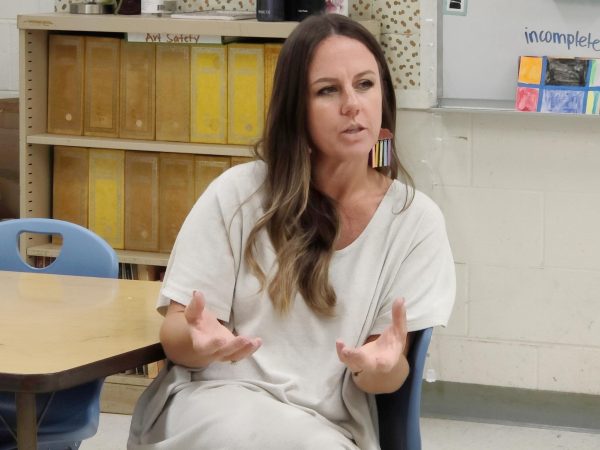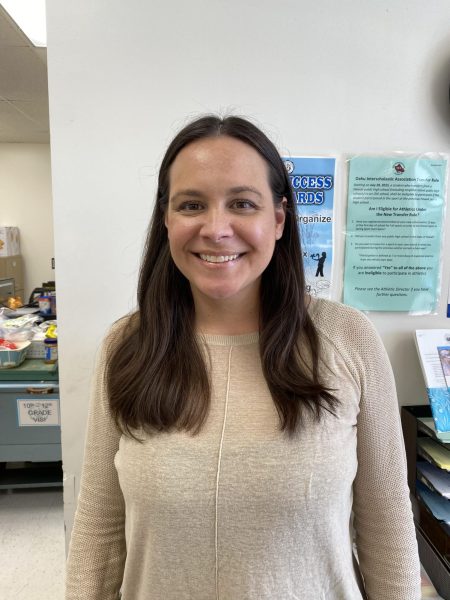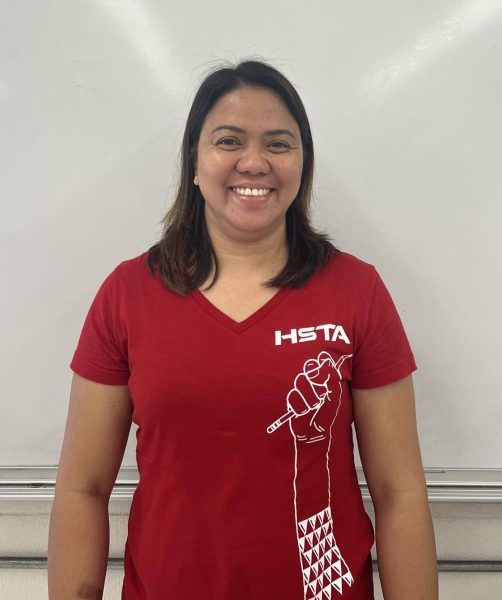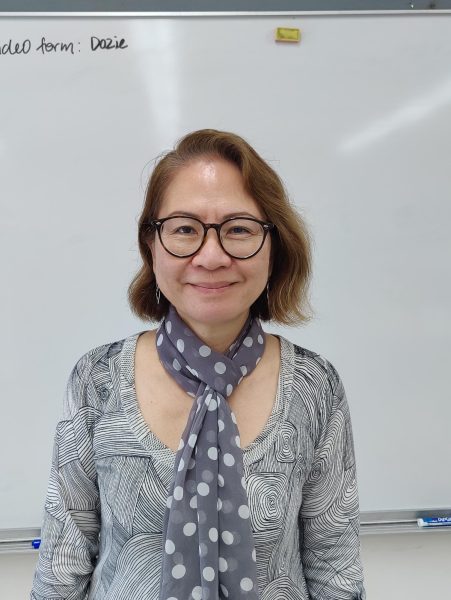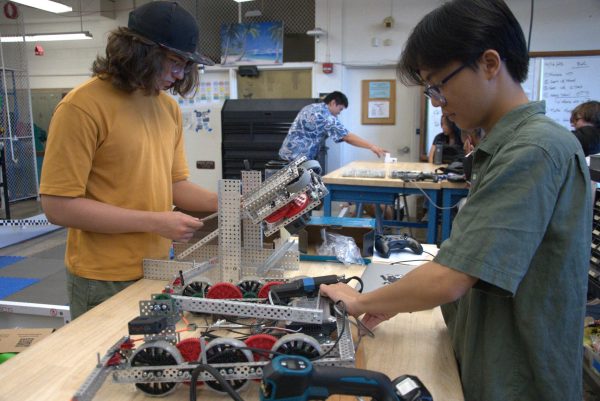Class learns through “hands-on history”
April 20, 2023
It is not quite “Night and the Museum,” but students in Lauren Kiyono’s AP World History class took their opportunity to create artifacts for a hypothetical museum as part of a third quarter unit that covered revolutions and imperialism between the 18th to 20th centuries. The result was an exhibit worthy of a lunchtime field trip to R 203.
“We were able to choose three items for an [imaginary] exhibit,” junior Patrick Baldovi said. “We had to explain its relevance [to the time period the group] selected and how it was used.”
Baldovi worked with Logan Downing to build a replica of the telegraph. They also collaborated on a model of the British ship Nemesis and created sample maps of the world.
“I enjoyed the process of making the artifacts,” Baldovi said, who built his model out of wood and metal.
Jon Salvador, Fabian Pena Aponte, and Koshiro Leonzon made a replica flag, shackles and sword to reflect the Haitian Revolution of 1791-1804, during which African slaves rebelled against the French colonial rulers.
Salvador, a junior, said he cut up a T-shirt and hand dyed the pieces and then sewed them together to make a replica of the flag the rebels flew after the insurrection.
“It was fun to be able to create something and model it to be like something in a museum,” Salvador said. “We selected items that stood out [from the research].”
The group consisting of juniors Xavier Leung and Charlize Magpanatay studied the changes in China in the 19th-20th centuries.
Leung, who said he was familiar with Chinese history already, worked with his partner to select relevant items representing the Opium Wars and Boxer rebellions, in which the Chinese rebelled against Western influence, and the Taiping rebellion, which was a civil war. The group made a Chinese tunic, opium pipe and wooden panel with elaborate calligraphy.
“I know calligraphy, so I wrote on the wooden board which contained a statement rebels might have written to justify their cause,” Leung said.
The shirt was someting the soliders wore at the beginning of the war. Later, it became a common form of dress, he said.
“I enjoyed [the project] so much, Leung said.
Magpantay was the artist of the pair. She made the model of the opium pipe.
“I tried to make it look as authentic as possible,” she said, but because it was difficult to make it out of actual wood, she had to use PVC pipe. “It was hard to paint. I ended up using alcohol markers to make it look like wood, and it actually worked. Because I didn’t contribute to the information [gathering], I wanted to work on something visible.”
“The museum exhibit was one of several options the students had for this unit, “Kiyono said. “They had about a month to work on it. I’m pleased with how they came out.”

